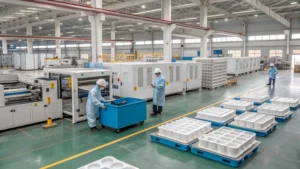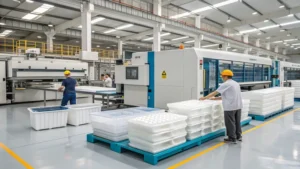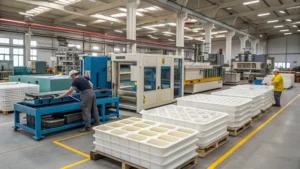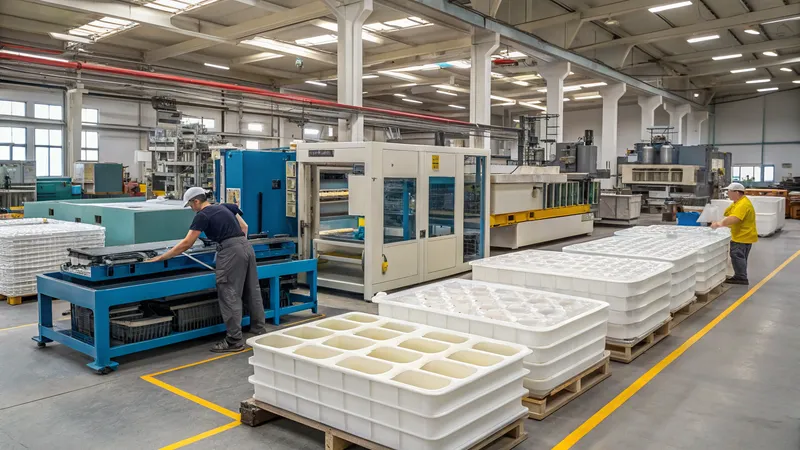
Vacuum forming, a type of termoform1, is a manufacturing process where a plastic sheet is heated to a pliable temperature, stretched over a single-surface mold, and shaped using vacuum pressure. Italy, renowned for its advanced manufacturing sector2, is home to several leading companies excelling in this technology. This blog explores the top five vacuum forming factories in Italy, their specialties, and the significance of the vacuum forming process.
Vacuum forming in Italy is spearheaded by Comi S.p.A., Veripack S.r.l., Coligroup Spa (Colimatic), OMV Machinery Srl (OMV Technologies), and Marchesini Group Spa, each excelling in innovative, customizable solutions for industries like packaging, automotive, and medical.
Understanding the vakumlu şekillendirme3 process and its applications is key to leveraging its benefits across various industries. Read on to discover how these factories contribute to Italy’s manufacturing prowess and how vacuum forming compares to other technologies.
Vacuum forming is a cost-effective process for producing plastic parts.Doğru
It offers lower tooling costs and faster setup times compared to other methods like injection molding.
Vacuum forming is only suitable for small parts.Yanlış
It is ideal for large parts like automotive components and signage, not just small items.
What are the Top 5 Vacuum Forming Factories in Italy?
Italy’s vacuum forming industry thrives due to the innovation and quality delivered by these top five factories:
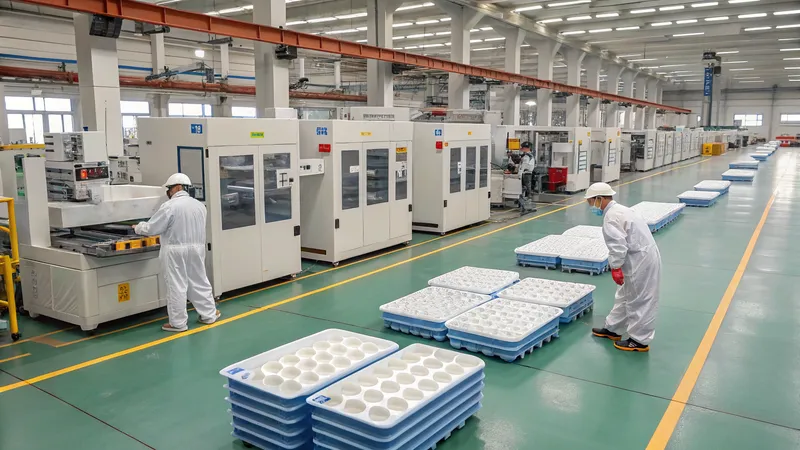
1. Comi S.p.A.
-
Overview: A leader in thermoforming machines4 for refrigeration, automotive, and sanitary industries.
-
Key Offerings: The LaborForma series processes materials like HIPS, ABS, PMMA, PP, and PVC, suitable for bathtubs, refrigerator liners, and signage.
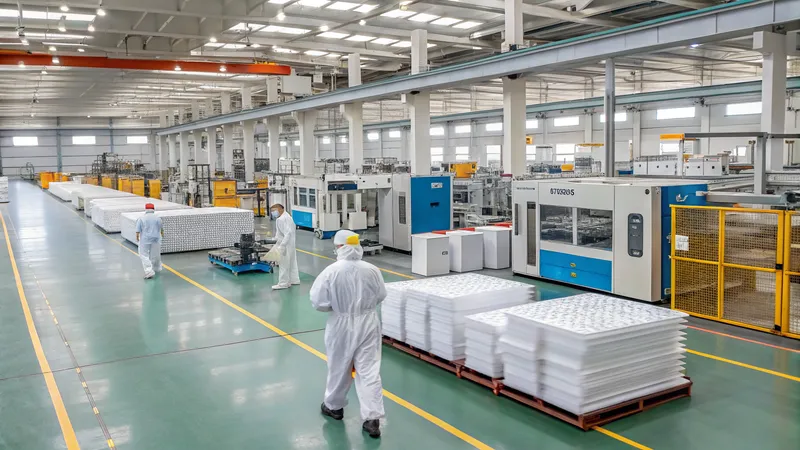
- Güçlü Yönler: Over 45 years of experience, 1,300+ plants installed globally, and expertise in process engineering.
2. Veripack S.r.l.
-
Overview: Specializes in high-output thermoforming machines for food and medical packaging5.
-
Key Offerings: Machines like the Freedom series support flexible and rigid films, with features like PLC control and up to 99 programmable cycles.
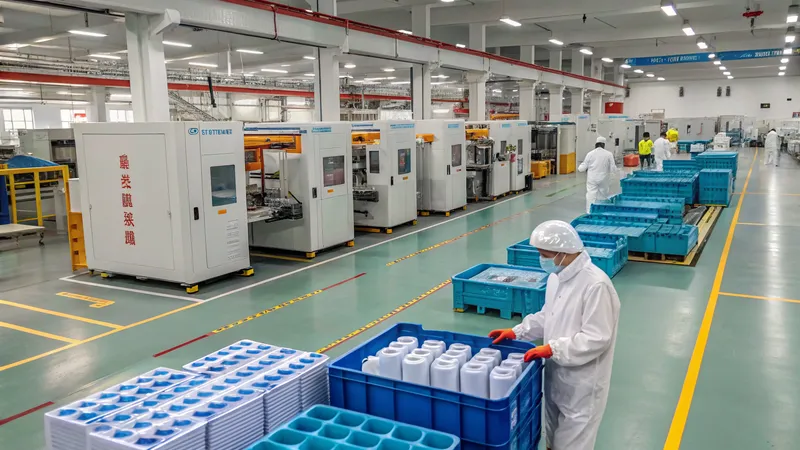
- Güçlü Yönler: Strong presence in India, focus on sustainability, and over 30 years of experience.
3. Coligroup Spa (Colimatic)
-
Overview: Known for its Colimatic brand, focusing on thermoforming lines for food and medical packaging.
-
Key Offerings: The THERA series supports paper packaging and modified atmosphere packaging (MAP).

- Güçlü Yönler: 45 years of experience, global technical support, and energy-efficient machinery6.
4. OMV Machinery Srl (OMV Technologies)
-
Overview: A leader in thermoforming and extrusion machinery, known for precision and efficiency.
-
Key Offerings: Closed-loop in-line extrusion and thermoforming systems, including the RM77 “Revolver” thermoformer.
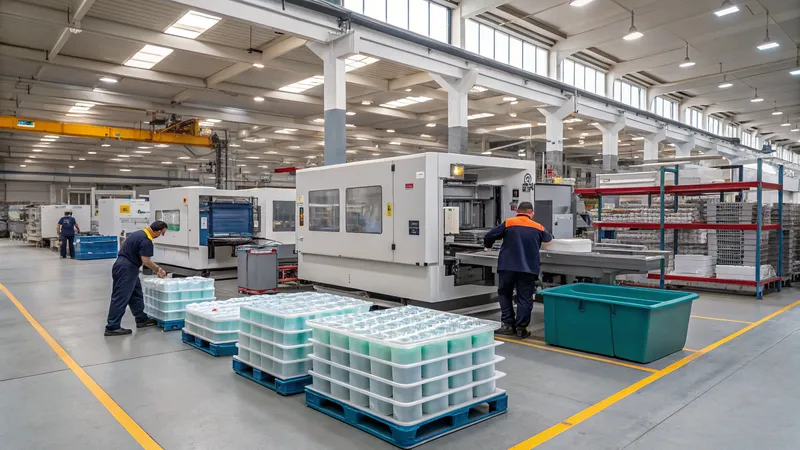
- Güçlü Yönler: 60 years of expertise, advanced R&D, and a reputation for high-speed processing.
5. Marchesini Group Spa
- Overview: A global leader in pharmaceutical and cosmetic packaging, offering thermoforming machines for blister packaging.
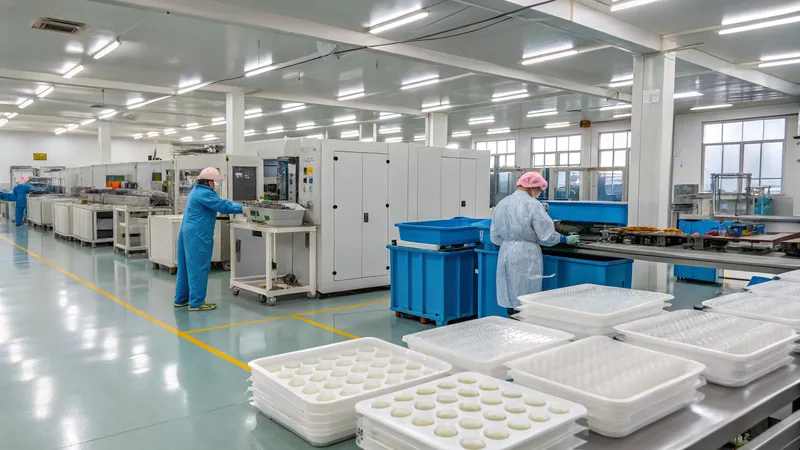
-
Key Offerings: The FB Series supports deep-drawn thermoforming for vials, ampoules, and syringes.
-
Güçlü Yönler: Over 9,000 machines produced, presence in 92 countries, and integration of robotic feeding systems.
Comi S.p.A. is a leading vacuum forming factory in Italy.Doğru
Comi S.p.A. has over 45 years of experience and a global presence, making it a top choice for thermoforming solutions.
All top vacuum forming factories in Italy focus solely on packaging.Yanlış
While packaging is a significant application, these factories also serve automotive, medical, and other industries.
What is the Vacuum Forming Process?
The vacuum forming process is straightforward yet highly effective, consisting of these key steps:
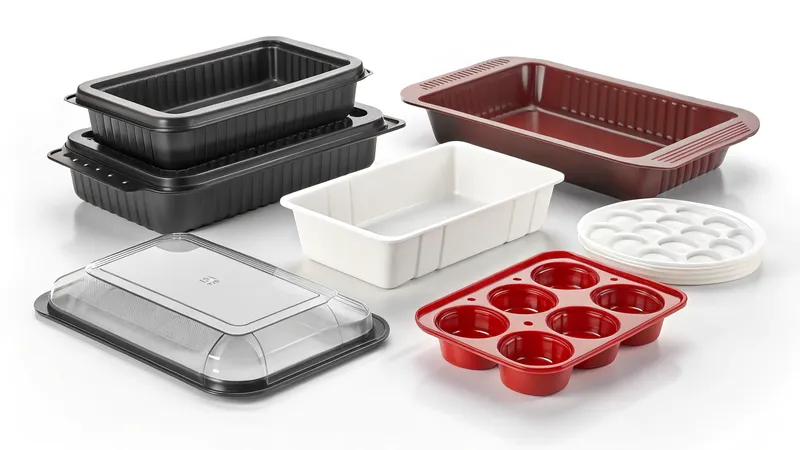
-
Malzeme Seçimi: Choose a thermoplastic sheet based on application requirements.
-
Isıtma: Uniformly heat the sheet to its forming temperature.
-
Şekillendirme: Drape the heated sheet over a mold and apply vacuum pressure.

-
Soğutma: Cool the formed part to set its shape.
-
Kırpma: Remove excess material using cutting tools.
-
Bitirme: Perform secondary operations like printing or assembly.
Anahtar Parametreler:
-
Heating Time and Temperature: Must be controlled to prevent material degradation.
-
Vacuum Level: Ensures proper adhesion to the mold.
-
Soğutma Süresi: Affects dimensional stability.
Vacuum forming always results in uniform thickness.Yanlış
Thickness can vary depending on the mold design and material properties.
Vacuum forming is suitable for rapid prototyping.Doğru
It allows for quick setup and production of prototypes.
What Materials are Used in Vacuum Forming?
Vacuum forming utilizes a variety of thermoplastics, each chosen for specific properties:

-
Polistiren (PS)7: Excellent clarity, ideal for display packaging.
-
Polipropilen (PP)8: High heat resistance, suitable for food packaging.
-
Polivinil Klorür (PVC)9: Rigid and chemical-resistant, used in blister packs.

-
Akrilonitril Bütadien Stiren (ABS): Strong and impact-resistant, used in automotive parts.
-
Polietilen Tereftalat (PET): Clear, recyclable, used in trays and containers.
Maddi Etki:
-
Şekillendirme Sıcaklığı: Varies significantly (e.g., PS at ~120–150°C, PVC at ~150–180°C).
-
Küçülme: Materials like PP have higher shrinkage rates (~1–2%).
Polystyrene is a key material in vacuum forming.Doğru
Its clarity and ease of forming make it popular for packaging.
All materials are equally suitable for vacuum forming.Yanlış
Material properties dictate suitability for specific applications.
Vakum Şekillendirme Uygulamaları Nelerdir?
Vacuum forming serves a wide range of industries, including:
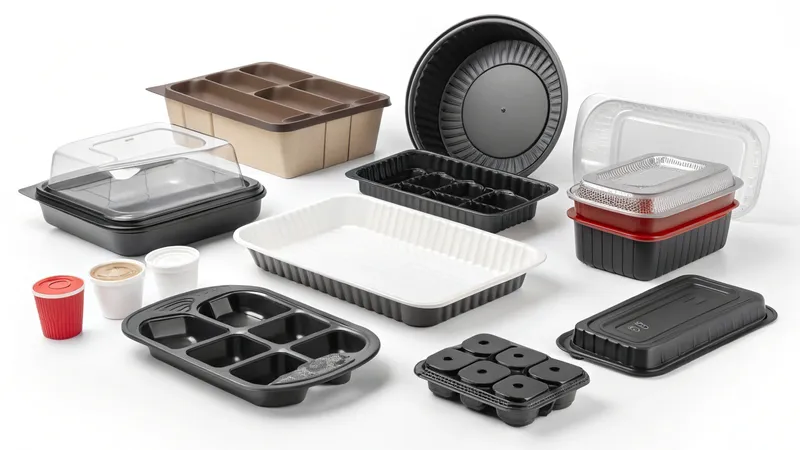
-
Paketleme: Blister packs, clamshells, trays.
-
Otomotiv: Interior trim, dashboards.
-
Tıbbi: Trays for surgical instruments.
-
İnşaat: Signage, architectural models.
-
Havacılık ve Uzay: Prototyping and interior components.
Vacuum forming reduces material costs in manufacturing.Doğru
It allows for thinner walls and less material usage compared to other methods.
Vacuum forming is only used in the packaging industry.Yanlış
It has diverse applications across multiple sectors.
How Does Vacuum Forming Compare to Other Technologies?
Here’s a comparison of vacuum forming with other plastic forming technologies:
| Teknoloji | Artıları | Eksiler |
|---|---|---|
| Vakum Şekillendirme | Lower tooling costs, fast setup, suitable for large parts, design flexibility | Limited to thinner walls, less detail for complex shapes, lower precision |
| Enjeksiyon Kalıplama10 | High precision, complex shapes, suitable for high volumes | High tooling costs, longer setup times, less suited for large parts |
| Şişirme Kalıplama11 | Ideal for hollow parts, efficient for bottles and containers | Not suitable for flat/shallow parts, requires parison, limited materials |
| Rotasyonel Kalıplama | Uniform wall thickness, suitable for large hollow parts | Slower production, limited to simple shapes, higher material costs |
Vacuum forming is more cost-effective than injection molding for large parts.Doğru
It has lower tooling costs and is better suited for large, shallow parts.
Vacuum forming can achieve the same precision as injection molding.Yanlış
Injection molding offers higher precision for complex shapes.
Sonuç
Italy’s top vacuum forming factories—Comi S.p.A., Veripack S.r.l., Coligroup Spa (Colimatic), OMV Machinery Srl (OMV Technologies), and Marchesini Group Spa—are driving innovation in thermoforming technology. Their expertise spans industries like packaging, automotive, and medical, offering cost-effective and high-quality solutions. By understanding the vacuum forming process, materials, and applications, businesses can harness this technology to meet diverse manufacturing needs.
-
This resource will clarify the distinctions between vacuum forming and thermoforming, helping you grasp their unique advantages in manufacturing. ↩
-
Learn about the traits of an advanced manufacturing sector to appreciate how Italy excels in this field, particularly in vacuum forming technology. ↩
-
Vakum şekillendirme sürecini ve çeşitli endüstrilerdeki uygulamalarını anlamak için bu bağlantıyı keşfedin ve üretim teknikleri hakkındaki bilginizi artırın. ↩
-
Explore this link to discover cutting-edge technologies and innovations in thermoforming machines that can enhance production efficiency. ↩
-
This resource will provide insights into the latest trends and technologies in food and medical packaging, crucial for staying competitive. ↩
-
Learn about the advantages of energy-efficient machinery, including cost savings and environmental impact, to improve your operations. ↩
-
Explore the unique properties of Polystyrene and its applications in vacuum forming, especially in display packaging. ↩
-
Learn why Polypropylene is favored for food packaging due to its high heat resistance and other properties. ↩
-
Discover the advantages of PVC in blister packs, focusing on its rigidity and chemical resistance. ↩
-
This resource will provide insights into Injection Molding's precision and efficiency, helping you make informed decisions. ↩
-
Learn about Blow Molding's efficiency for hollow parts and its limitations, which is crucial for selecting the right forming technology. ↩



